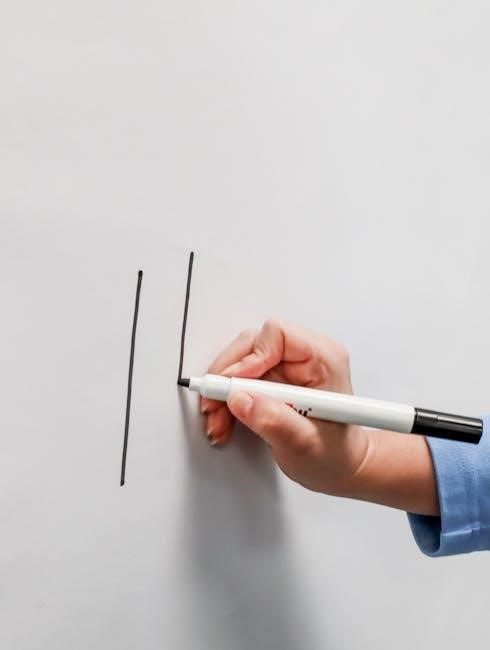Understanding violin dimensions is crucial for players‚ with standard sizes including 4/4‚ 3/4‚ 1/2‚ and 1/4‚ each with specific length measurements‚ such as 23 inches for a full-size violin‚ to ensure proper fit and playability always matters.
Understanding Violin Sizes

Violin sizes are determined by the length of the instrument‚ with the standard sizes being 4/4‚ 3/4‚ 1/2‚ and 1/4. Each size has a specific length‚ such as 23 inches for a full-size violin. The size of the violin is important because it affects the playability and sound quality of the instrument. A violin that is too large or too small can be difficult to play and may not produce the desired sound. The size of the violin is typically determined by the player’s age and arm length‚ with smaller violins suitable for younger players or those with shorter arms. The different sizes of violins are designed to accommodate players of different ages and skill levels‚ from beginner to advanced. By understanding the different violin sizes‚ players can choose the right instrument for their needs and ensure a comfortable and enjoyable playing experience. The sizes of violins are standardized to ensure consistency and quality across different manufacturers and models. This standardization allows players to easily find the right size violin‚ regardless of the brand or type of instrument.
Importance of Correct Violin Size
The correct violin size is essential for proper playing technique and to prevent discomfort or injury. Playing a violin that is too large or too small can lead to poor posture‚ intonation problems‚ and fatigue. A well-fitting violin allows players to hold the instrument correctly and move their fingers and arms freely‚ enabling them to produce a good tone and play with ease. The correct size also helps to develop proper playing habits and technique‚ which is critical for beginners. Additionally‚ playing a violin that is the right size can help to prevent injuries such as tendonitis‚ carpal tunnel syndrome‚ and back strain. Using a violin that is the correct size can also enhance the overall playing experience‚ making it more enjoyable and rewarding. By choosing the right size violin‚ players can ensure a comfortable and successful learning experience. Proper fit is crucial for optimal performance and long-term enjoyment of playing the violin.

Violin Size Chart
Violin size charts provide measurements for various sizes‚ including 4/4‚ 3/4‚ 1/2‚ and 1/4‚ to help players choose the correct size instrument always and easily online.
Standard Violin Sizes
The standard violin sizes are typically categorized into four main groups‚ including 4/4‚ 3/4‚ 1/2‚ and 1/4. These sizes refer to the length of the violin‚ with the 4/4 size being the largest and the 1/4 size being the smallest. The 3/4 size violin is 21.5 inches long‚ while the 1/2 size violin is smaller. Each size has its own specific measurements‚ such as the length of the back and the overall length of the instrument. The standard measurements for each size are used as a guideline to ensure that the violin is properly sized for the player. The size of the violin is important because it affects the playability and sound quality of the instrument; A violin that is too large or too small can be difficult to play and may not produce the desired sound. The standard sizes provide a starting point for players to find the right size violin for their needs. The correct size violin can make a big difference in the player’s ability to play comfortably and produce a good sound. Violin makers use these standard sizes to create instruments that meet the needs of players.
Measurement Guidelines
To ensure accurate measurements‚ violin makers and players use specific guidelines. The length of the violin is typically measured from the top of the scroll to the bottom of the body. The back length is measured from the top of the back to the bottom of the back. The overall length includes the neck and scroll. These measurements are crucial in determining the size of the violin. Measurement guidelines also include the width and depth of the violin‚ as well as the length of the neck and fingerboard. By following these guidelines‚ players and makers can ensure that the violin is properly sized and proportioned. The measurements are usually taken in inches or millimeters and are used to determine the size of the violin‚ such as 4/4‚ 3/4‚ 1/2‚ or 1/4. The guidelines provide a standard reference point for violin makers and players to work from‚ ensuring consistency and accuracy in violin sizing. This consistency is essential for producing high-quality violins that meet the needs of players.

Choosing the Right Violin Size
Proper violin size selection is essential for comfortable playing and technique development always matters with correct measurements.
Arm Length and Violin Size

To determine the correct violin size‚ it is essential to consider the player’s arm length‚ as this will affect the comfort and playability of the instrument. The arm length is measured from the neck to the middle of the palm‚ and this measurement is used to determine the suitable violin size. Generally‚ a player with a longer arm length will require a larger violin size‚ while a player with a shorter arm length will require a smaller size. The relationship between arm length and violin size is crucial‚ as a violin that is too large or too small can lead to discomfort‚ poor technique‚ and potentially even injury. By considering the arm length‚ players can ensure that they are using a violin that is well-suited to their physical characteristics‚ allowing them to play with ease and confidence. This measurement is a critical factor in selecting the right violin size.
Age and Violin Size
The age of the player is a significant factor in determining the suitable violin size‚ as children and adolescents require smaller violins to accommodate their physical development. Typically‚ children under the age of 11 use a smaller violin size‚ such as 1/4 or 1/2‚ while older children and teenagers use a 3/4 or full-size violin. The age of the player is used as a general guideline to determine the appropriate violin size‚ as it is closely related to the player’s physical size and arm length. By selecting a violin size that is suitable for their age‚ young players can ensure that they are comfortable and able to play with proper technique. As players grow and develop‚ they may need to transition to a larger violin size to accommodate their increasing arm length and hand size. This transition is a normal part of a player’s development and is essential for continued progress and improvement. Using the correct violin size for their age is essential for young players.
Proper violin dimensions and size are essential for comfortable playing and technique development always matters with correct size.
Final Thoughts on Violin Dimensions
Violin dimensions play a significant role in the overall playing experience‚ and understanding the different sizes and measurements is crucial for players of all levels. The standard sizes‚ including 4/4‚ 3/4‚ 1/2‚ and 1/4‚ each have specific length measurements that ensure proper fit and playability. By considering factors such as arm length and age‚ players can determine the ideal violin size for their needs. Additionally‚ using the correct bow size is also essential for comfortable playing and technique development. With the right violin dimensions and size‚ players can focus on developing their skills and enjoying the music-making process. The importance of proper violin dimensions cannot be overstated‚ and players who take the time to understand and choose the right size will be rewarded with a more comfortable and enjoyable playing experience. Overall‚ violin dimensions are a critical aspect of playing the violin‚ and players should prioritize finding the right size to suit their needs.




















